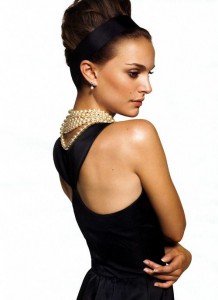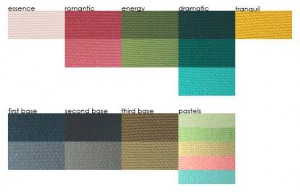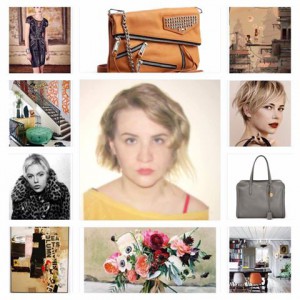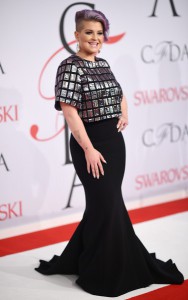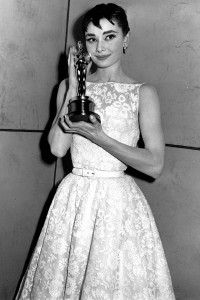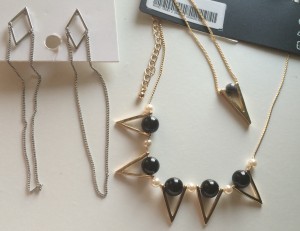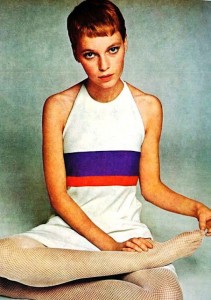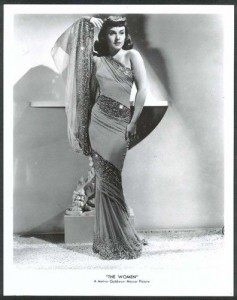Most of the prominent style systems seem to be more or less based on what came before. Truth Is Beauty seems based on Kitchener’s work, which in turn has its roots in McJimsey. Best Dressed is based on Kibbe, which also uses McJimsey’s types. And all of this comes from Belle Northrup and yin/yang. And then Zyla is based on Suzanne Caygill, and Dressing Your Truth is based on any number of four-type systems.
So I appreciate it when someone comes up with something that is new. Kati L. Moore’s Fantastical Beauty system is something different. There are set of nine fantasy archetypes, each with a multitude of subtypes, as well as a “base 5” system of the base types Kibbe uses with “rounded/linear” versions, i.e., yin/yang, soft/flamboyant or dramatic. In addition to deciding on an archetype, subtype, and base type, you can also lean within your archetype, creating a system that, while it’s complex, is flexible and has a lot of room for personalization.
It is, in fact, too complex for me to explain in a blog post that’s really supposed to be a review of one of the products FB offers. If you’re interested in the system, I suggest reading the blog posts about it, and joining the Facebook group. The blog and Facebook both have new information coming forth on a regular basis.
At first, I wasn’t too interested in the system for myself. But lately, I’ve found myself feeling like Zyla’s Mellow Autumn and Dark Autumn clothing recommendations in conjunction with FG haven’t been working for me. The combination is just too heavy and serious. Even though I think my real personality is more Autumn, I think the vibe that works for me needs more fun, more Spring elements. Anyway, I decided to look into a Fantastical Beauty type instead of plunging back into Zyla.
My first thought for a FB type was Maenad. But the typical Maenad look is more boho, more music festival, although there is a type of Maenad that wears cute little dresses. I decided to go with Fae, since it seemed like it would add the lightness and fun that was missing from my look at the moment.
I think I am probably a Fae, specifically the “Nixie” subtype, leaning Maenad. In FB, your secondary type can be up to 40% of your entire look.
Anyway, I decided to purchase the Fae Style Guide, and that’s what I’m going to review today. The Fae guide is 13 pages long, including the title page and some larger illustrations. It includes a basic overview of the type; specific recommendations for clothing, hair, makeup, and accessories; color schemes and combinations for all four major seasons; and then a summary of Dos and Don’ts for the type.
After reading the guide, you should be able to understand how this type dresses; however, it does not cover how to work your Base 5 type into it, nor does it go into the subtypes in any real detail–but I have heard that Kati is writing guides for each of the subtypes as well. The system is in its nascent stage, and I can only assume that more materials will come out that will clarify some of these things, although some of it Kati may choose to reserve for clients who pay for an analysis.
There are two main issues I have with this guide. The first is price. It is 30 dollars. On the one hand, it’s an original system, with its own recommendations and its own vision, so I can understand that these guides took a lot of work and a long time to create. On the other hand, it’s on the shorter side and does not cover the subtypes or Base 5 variants of the type. From the consumer’s perspective, I would probably find $15 to be a fairer price, maybe $20, especially because there’s a possibility you may lean into another type and need that guide as well. I would like to pick up the Maenad guide, but spending another $30 isn’t something I want to do right now. Whereas if they were $15, I would have bought both in the first place. I think in the end, people would just pick up more guides if they were priced lower, making more money in the end.
The other issue is probably a temporary one, but even choosing which guide to buy feels like a gamble. I decided on Fae based on examining all of the different outfits on the blog and discussing whether Maenad was right for me with someone who had the Maenad guide already. There are no clear descriptions of the types on the site, and it’s hard to decide, since there is so much room for personalization. This is both a plus and a minus for the system. It’s definitely a plus if you get an actual analysis. But it makes DIYing hard, since there are so many possibilities even within a single archetype. The price tag compounds this gambling issue, since you won’t know for sure if you’ve chosen the right guide until you receive it and read it. Kati does have Pinterest boards for each type, but I wouldn’t have chosen Fae if the Pinterest board was all I had had to go on.
Regarding price, since so many people lean into another type, it would be nice if there were a kind of discount if you were buying two guides together, say, five or ten dollars off.
I will post later on how I’m using this new information alongside my Flamboyant Gamine recommendations. For now, I would say that it could be worth getting if you’re pretty sure of what your type is. What I’ve found most helpful is helping me to keep a certain sensibility in mind when I’m looking for clothes. I hope in the future that there will be more information on the blog that will help people choose the correct archetype for themselves.
Have you purchased a Fantastical Beauty guide? What do you think? If you haven’t but you’re interested, which type(s) are you considering?
